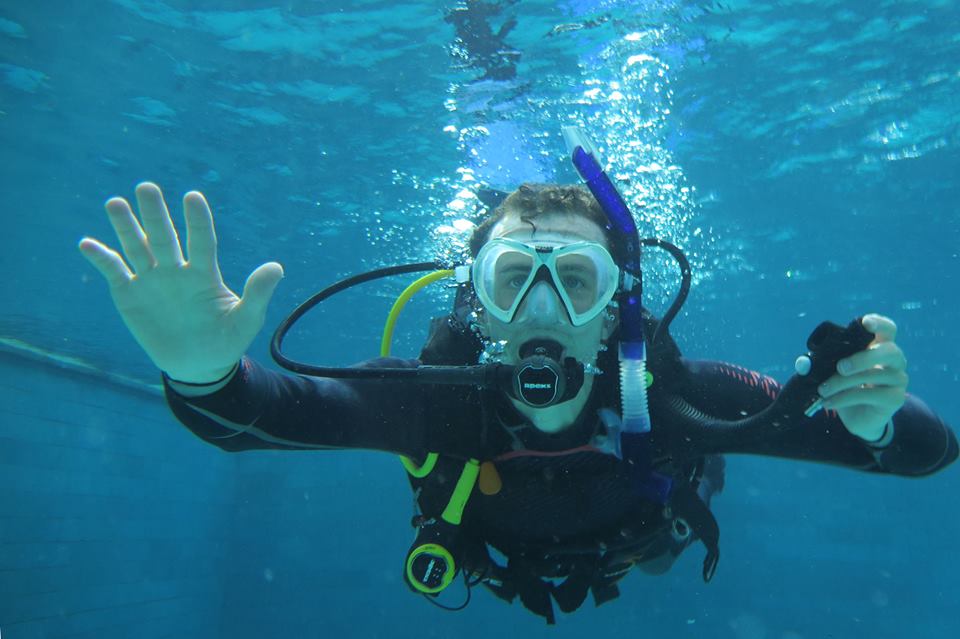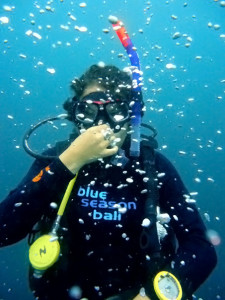 What do you do if you run out of air and when you go to look for your dive buddy they are nowhere to be found? You perform a CESA. You would have learnt this skill on your PADI Open Water Diver Course, but perhaps it has been a while since you did your course. Here are the steps for you:
What do you do if you run out of air and when you go to look for your dive buddy they are nowhere to be found? You perform a CESA. You would have learnt this skill on your PADI Open Water Diver Course, but perhaps it has been a while since you did your course. Here are the steps for you:
1. Don’t panic. Divers Alert Network (DAN) reports that most scuba diving accidents are caused by divers panicking and forgetting to follow their training.
2. Look up, and slowly start kicking to the surface. DO NOT drop your weights as this can cause a rapid ascent.
3. The ideal position for this, is to have one hand over your head to prevent yourself from knocking into anything along the way, and the other hand should be holding your inflator hose up so that if you start to rise too quickly, you can gently let a little air out of your BCD.
4. Remember that as you ascend, air will expand in your lungs and in your BCD. So as you are kicking up, try to make a continuous “ahhhhhh” sound. This will allow you to release any excess air from your lungs and prevent any lung over expansion injuries.
5. Remember that the maximum ascent speed should be no more than 18m (60ft) per minute – if you are diving with a dive computer, you can use this to track your speed. If not, try to find a point of reference, and watch your depth gauge and timer as you ascend.
6. Once you reach the surface, remember that you will need to manually inflate your BCD. You do this by blowing through an open inflator hose. If you are struggling to stay at the surface, drop your weights immediately.
7. Once you are positively buoyant on the surface, look around you and signal to the boat or shore for assistance.
Have you ever had to do a controlled emergency swimming ascent while diving? Tell us about it in the comments.
Need a quick refresh before your next dive trip? Sign up for a scuba review today!



